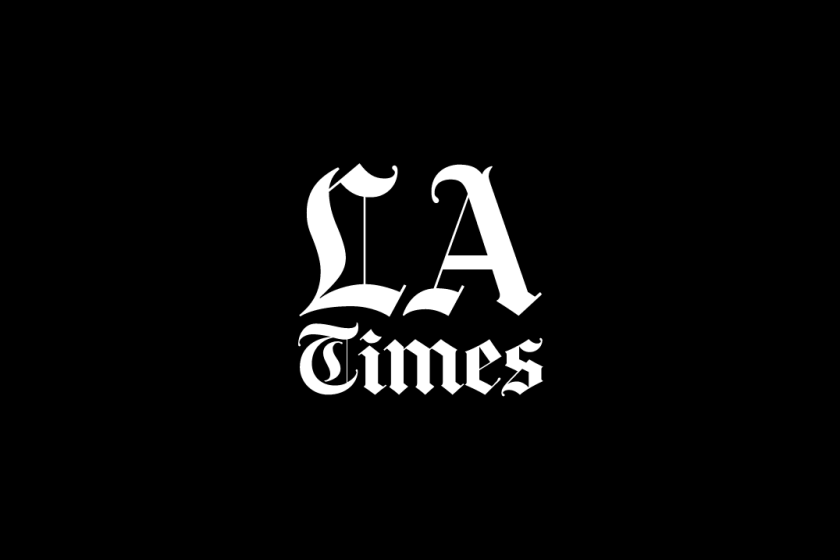Sedina L. Banks, Kaleigh L. Kemmerly and Pooja Nair Share Insights on the Food & Beverage Industry in 2024
- Share via
The Food & Beverage Roundtable panel is produced by the L.A. Times B2B Publishing team in conjunction with Ervin Cohen & Jessup LLP; Greenberg Glusker LLP; and HUB International.
With the still-evolving operational changes that businesses in every sector have had to make over the last few years, a whole new landscape has emerged in the food and beverage sector in terms of financial, legislative, employment and supply chain issues. Even the most seasoned industry pros have found themselves having to get creative to determine solutions over the past few years.
Are shifts in protocols and best practices that have emerged temporary or here to stay? What should restaurants, manufacturers, distributors and vendors be focusing on in terms of new trends and standards?
To address these issues as well as many other topics, the Los Angeles Times B2B Publishing team turned to three leading food and beverage industry experts for their thoughts and most important tips and to get their assessments regarding the current state of the industry and the various trends that they have been observing.
Q: Are there any new regulatory issues that food and beverage companies need to be aware of in 2024?

Sedina L. Banks, Environmental and Regulatory Compliance Partner, Greenberg Glusker LLP: We can expect front-of-package nutrition labeling (FOP labeling) to be a major focus in 2024. The Food and Drug Administration (FDA) is increasingly focused on prioritizing nutrition initiatives to ensure consumers have access to healthier foods and have the necessary information to make informed food decisions. These initiatives include FOP labeling. Per the FDA, FOP labeling would complement the already required Nutrition Facts label by displaying “simplified, at-a-glance nutrition information,” allowing consumers to quickly and easily make informed food choices. The FDA is engaged in consumer research and stakeholder feedback on FOP labeling. In March, the FDA Commissioner previewed some FOP labeling prototypes.

Pooja Nair, Partner and Chair of Food, Beverage and Hospitality Practice Group, Ervin Cohen & Jessup LLP: Some recent regulatory issues include: (1) Minimum wage increases: California has passed a $20 minimum wage for fast food employees, which went into effect on April 1, 2024. (2) Non-compete provisions: California has historically prohibited non-compete provisions except under very limited circumstances. On April 23, 2024, the FTC issued a final rule to ban non-competes nationwide. Therefore, employees who have relied on broad non-compete agreements in their employment agreements will no longer be able to do so. (3) Food additives: California passed the California Food Safety Act to ban five specific food additives by January 2027. Another legislation targeting PFAS use is being debated now and would ban the sale of all products containing PFAS by 2030. (4) Delivery/gig economy regulations: Many states are increasingly regulating the gig economy, which primarily affects restaurant and grocery delivery. Multiple states, including California, New York and Florida, have passed regulations to require that restaurants be notified and authorize their food to be available on delivery sites, transparency with fees to consumers and minimum standards for gig workers delivering products.

Kaleigh L. Kemmerly, Senior Vice President, HUB International: Here are five to be aware of: (1) Sustainability standards: Presently there are increased pressures for companies to adopt sustainable practices through all avenues of the business, such as supply chain, sourcing, manufacturing, packaging and waste disposal. (2) Per- and polyfluoroalkyl substances (PFAS) regulation: Companies should pay attention to the developing regulations and compliance requirements related to PFAS in packaging materials, food and beverage. (3) Food safety innovation: To comply with developing regulatory specifications, companies should be ready to execute food safety administration systems, traceability measures and preventive restrictions. (4) Unconventional foods regulation: Foods such as insect-based products, plant-based meat alternatives and cell-cultured meat are continuing to gain traction and popularity in the marketplace. Companies involved in this type of development should connect with governing organizations to address compliance requirements. (5) Nutritional labeling: Continues to evolve with the focus of providing consumers with actual and accessible nutritional content and ingredients of products.
Q: As a trusted advisor, what are some of the key pieces of advice you have provided to the businesses you work with in terms of managing their supply chain in the current climate?
Kemmerly: Some key pieces of advice I’ve provided include: (1) Have variation: Have a mixed supplier base and several different sourcing locations so you’re not putting all your eggs in one basket that’s similar and heavily relied upon. (2) Use collaboration and interaction: Always have open communication with your stakeholders, suppliers and logistics partners. (3) Risk evaluation: Develop an assessment of your supply chain to identify exposures, dependencies and hypothetical interferences. (4) Resilience arranging: Create a business continuity plan to ensure your company can respond in the event of a natural catastrophe, geopolitical conflicts, labor strikes and/or a pandemic. (5) Observing and adjustment: Pay attention to geopolitical events, market dynamics and regulatory fluctuations. (6) Insurance coverage: Always review your policies to make sure you have the proper coverage when it comes to insuring your supply chain, such as stock throughput, business interruption and contingent business interruption.
Q: Per- and polyfluoroalkyl substances (PFAS) have been the subject of discussion surrounding regulations prohibiting the use of intentionally added PFAS in food packaging. What should companies be aware of?
Banks: Known as “forever chemicals,” PFAS are human-made chemicals that have been used for decades and are found in many different commercial, industry and consumer products. PFAS have recently been the subject of federal and state regulation. For example, the United States Environmental Protection Agency (EPA) recently designated two widely used PFAS compounds, PFOA and PFOS, as “hazardous substances.” EPA also announced enforceable drinking water standards for six PFAS. In California, certain PFAS compounds are included on the list of California Proposition 65 chemicals. Commencing on January 1, 2023, California prohibited the distribution, selling or offering for sale any food packaging containing PFAS. We are seeing an uptick in plaintiffs’ actions based on the presence of PFAS in food packaging and products. Companies should be aware of the new PFAS regulatory requirements and undertake internal audits to ensure compliance.
Kemmerly: Companies need to be aware of: (1) Component inspection: Make sure suppliers are following regulations and show documentation of the absence of PFAS. Assess food, beverage, packaging materials and components to detect if any PFAS compounds are deliberately added during the manufacturing process. (2) Compliance requirements: Regulatory agencies may impose restrictions or bans on the use of certain PFAS due to potential health and environmental concerns. Stay up to date with current and upcoming developments. (3) Classification and clarity: Transparent communication with consumers is key! Consider using “PFAS-free” when labeling products to build trust and confidence with the consumer base. (4) Risk evaluation: Verify likely exposure routes for PFAS compounds in food and beverage packaging, including the possibility of it passing into the product that’s consumed. (5) Partnership and backing: Engage and partner with governing organizations and business alliances to stay afloat on best practices and policy changes having to do with PFAS.
The greatest opportunity stems from adapting to changing consumer preferences. Established brands are increasingly venturing into new product lines that include non-dairy, gluten-free, plant-based and nonalcoholic options.
— Sedina L. Banks
Q: Are plant-based foods continuing to trend upward? If so, are food businesses with no plant-based options going to fall behind?
Nair: The market for plant-based food has dramatically expanded from approximately $4 billion in 2017 to $8.1 billion in 2023, and projections suggest that there is still significant room for growth. Most companies have either offered plant-based options or are exploring plant-based options. While there is some pushback to further regulate the labeling of plant-based foods, such as limiting the use of meat and dairy terms to refer to plant-based alternatives, these foods and beverages will be part of the marketplace, and consumers are getting used to having these options.
Q: When it comes to sustainability and environmental claims, are more changes and revisions to FTC guidance in store?
Banks: The FTC’s Green Guides provide companies with guidance on compliant green marketing claims to help avoid so-called “greenwashing.” Greenwashing occurs when a company overstates the environmental benefits of its practices or products. The Green Guides discuss general principles that apply to all environmental marketing claims and guidance on how companies can qualify their claims to avoid consumer deception. First issued in 1992, the FTC periodically revises the Green Guides to address new issues and clarify existing guidance. Because the last update was over a decade ago, the FTC is currently updating the Green Guides. Among other updates, the FTC is considering issuing additional guidance on the term “sustainability” and other commonly used green marketing terms. Companies should be aware of these proposed revisions and make sure that they are relying on the most current version of the Green Guides.
Nair: The FTC has been extremely active in cracking down on deceptive advertising, particularly related to sustainability and environmental claims. The FTC has also announced that it will be updating its “Green Guides,” which provide guidance for the use of environmental marketing claims. One aspect is that the FTC is increasing its power to seek civil penalties against businesses for violations. In 2022, the FTC obtained civil penalties from big box retailers for “greenwashing” by advertising products and describing them as “sustainable” and “environmentally friendly” when they were actually made of nonsustainable content. Notably, plaintiffs use the Green Guides, which were last updated in 2012, to set a standard for unfair or deceptive advertising.
Even in our new digital world, there is still a people aspect to the business. You must taste, touch, hear and see the product to learn and understand it.
— Kaleigh L. Kemmerly
Q: What should companies be aware of to avoid the risk of “greenwashing” claims?
Banks: Companies must be mindful to ensure that their green marketing claims are not “greenwashing,” which can expose companies to private and public lawsuits and reputational damage. Some tips to avoid greenwashing liability include ensuring that green marketing claims are factually supported. For example, companies cannot claim that their packaging is recyclable if the facts do not support the claim. Companies must also ensure the claims comply with both federal and state law. California, for example, has more stringent green marketing requirements compared to the federal requirements. There may also be product-specific green marketing requirements. Finally, companies should periodically review and reassess their green marketing claims to confirm continued compliance. The law in this area is constantly evolving. Green marketing claims that were permissible in the past, may no longer be legal.
Q: Has the insurance landscape changed for food & beverage companies? What should they be looking out for on that front?
Kemmerly: Food and beverage companies should be mindful of: (1) Supply chain risks: The food and beverage industry has become a global supply chain. Companies are subject to interference due to natural catastrophes and geopolitical conflicts. Stock throughputs and proper business interruption and contingent business interruption coverage can help ease these hazards. (2) Cybersecurity: With advancements in technology, food and beverage companies have become very dependent on digital systems for consumer engagement and operations. Cyber policies are crucial and will protect a company against ransomware attacks, data breaches and other incidents that may impact consumer faith and organization stability. Social engineering continues to be an issue. Plaintiff attorneys are being funded by third-party money who participate in the higher awards. Look at higher liability limits. (3) Product recall: Covers the removal of flawed or hypothetically dangerous products from the marketplace. Includes alerting consumers, recovering the product, fixing and or restoring it, and overseeing the accompanying fees and charges. Be wary of language included in a liability policy as it is not full coverage. (4) Employment practices liability: Should be a part of every insurance program and include Wage and Hour for defense as class action lawsuits occur when “clock” management is not good. (5) Pollution policy: Important to have especially when dealing with PFAS and for companies that use ammonia or other products that could get into a water table. (6) Contract review: Many companies use third-party labor contractors. Due diligence should be exhibited when choosing a labor contractor and verifying coverage on a regular basis is important. Many companies lose their insurance and don’t mention it.
Q: A couple of years ago, the FDA revised its definition of “healthy” and how the term can be used when describing food and beverage products. Plaintiff lawyers have seized on their own definitions of “healthy,” taking aim at added sugars. What should companies be aware of to avoid risk of action?
Nair: First, no matter how careful and compliant food and beverage companies are with their product advertising, there is still a risk of a class action lawsuit. Companies should factor this risk into their operating budget and be ready to take action. These lawsuits are most likely to be brought in California, New York and Illinois due to the broad interpretation of the reasonable consumer standard by the Ninth, Second and Eleventh Circuit Courts of Appeal. Companies should be aware that all aspects of a product’s label, packaging, advertising, website and social media campaigns could be subject to false advertising claims.
Q: Have food & beverage trade shows made a full comeback since having to shut down a couple of years ago?
Kemmerly: 100%, depending on the show. Here in So Cal we have the Natural Products Expo West in Anaheim that just took place in March. It is one of the largest tradeshows for the natural, organic and healthy products industry. It’s considered a key event for networking, highlighting products and staying updated on industry trends and innovations. In the past five years I’ve attended, I’ve walked away in awe of the creativity and flavors these companies have come up with. A lot of companies I’ve met at the show, their product has become a part of my daily regimen. I built my book of business and made long-lasting business relationships by attending tradeshows. Even in our new digital world, there is still a people aspect to the business. You must taste, touch, hear and see the product to learn and understand it.
Q: What is the greatest opportunity you are currently seeing for the industry?
Banks: The greatest opportunity stems from adapting to changing consumer preferences. Established brands are increasingly venturing into new product lines that include non-dairy, gluten-free, plant-based and non-alcoholic options. Alcohol brands are launching non-alcoholic mixers, elixirs and alternatives to traditional drinks, like beer. These products cater to non-drinkers but are versatile enough to appeal to those who consume alcohol. As companies diversify their offerings, many are restructuring their operations to support these new lines, often necessitating corporate reorganization, investment in intellectual property, significant capital raises and fundraising.
Companies should be aware that all aspects of a product’s label, packaging, advertising, website and social media campaigns could be subject to false advertising claims.
— Pooja Nair
Q: How is food safety impacting the food and beverage industry?
Kemmerly: Governing compliance, brand reputation and consumer trust. The food and beverage industry is now a global supply chain. The safeguarding of ingredients and products has become more complex. The use of blockchain can help trace initial ingredients, be more transparent, help mitigate risks and improve liability through the supply chain. Improvements in the food and beverage testing methods and quality control procedures are critical for maintaining ambitious standards and addressing potential safety issues right away.
Q: What are some of the biggest mistakes that food and beverage companies make?
Nair: From a legal perspective, these are some of the most common mistakes I see: (1) Deficient contracts: Often, small and midmarket food and beverage companies without in-house counsel will enter into form agreements with suppliers, business partners and investors. If disputes arise, these form contracts may not serve their interests. (2) Compliance with employment law: Particularly in California, employment law is unforgiving if employers do not meet all requirements and is fluid because new laws are constantly being added. Failing to understand the requirements of California employment law is a major mistake. (3) Handshake deals: Deals with investors and business partners are often made based on trusted relationships and are not properly documented, which can create significant complications and litigation down the line.
Banks: One of the biggest mistakes that food and beverage companies make from a regulatory compliance perspective is failing to stay apprised of the constantly changing regulatory landscape applicable to their products. Food and beverage companies need to be aware of federal and state requirements applicable to labeling, product composition and marketing statements. Food and beverage companies should also be careful not to rely on their competitor’s practices to ensure regulatory compliance. I’ve seen even large, national companies run afoul of regulatory requirements. While it is helpful to be aware of your competitor’s practices, that knowledge should be a starting point and not an end-point in any compliance analysis.
Q: Looking to the future, how do you see the industry evolving over the next five years?
Kemmerly: The food and beverage industry will continue to trend upward toward healthier eating habits, sustainability, and technology. Cultural changes toward healthy eating, reading labels and increased awareness of where ingredients are coming from continue to shape the industry’s path. Sustainability is key with eco-friendly packaging, reducing environmental impact and enhancing a company’s brand reputation. Technology, like AI and data analytics, is crucial with innovations in food delivery, personalized nutrition, automation, enhancing food safety, distribution and marketing strategy.



